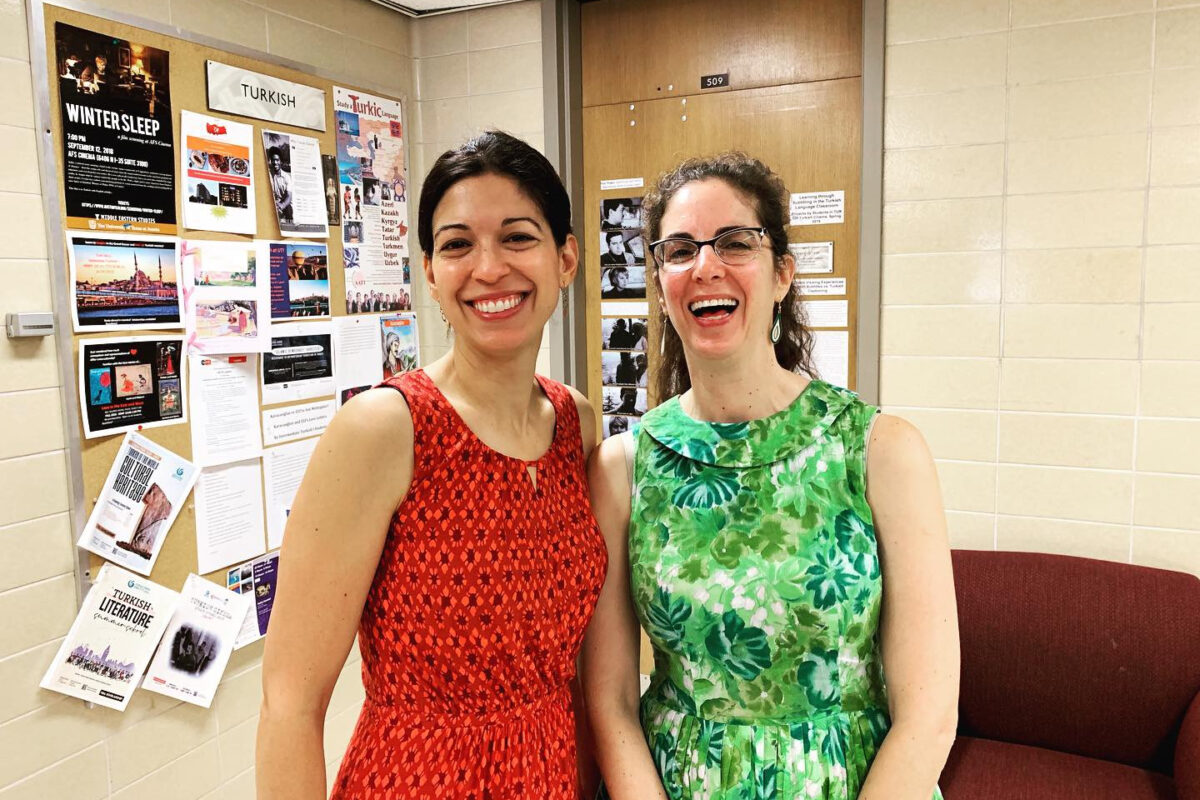The Department of Middle Eastern Studies navigates academic and international politics in a spirit of respect and collaboration
Over 20 years ago, UT Austin’s Department of Middle Eastern Studies (MES), like so many academic departments, was characterized by intense volatility and internal conflict, though the cause wasn’t what one might assume, given the fraught politics and history of the Middle East. It wasn’t about Israel and Palestine, Jews and Muslims, or Shia and Sunni.
“It never had anything to do with religion, race, politics, or ethnicity,” remembers Associate Professor Kamran Scot Aghaie, who later chaired the department and directed the program. “It was all personalities. There was a small number of people who had a hard time getting along.”
With the backing of the Dean’s office, the department re-structured itself around the principles of transparency, democracy, and egalitarianism. Changes included broader systemic shifts—such as how the executive committee was structured, and allowing affiliates to vote—and smaller, more logistical adjustments, like assigning offices at random, so that people with different academic foci would talk to each other in the hall, and no one would argue about how many windows they had.
“It was a long, unpleasant period,” reflects Aghaie, “but the moment the new system was fully implemented, which took about four years, all the conflict vanished. We built the department based on principles we wanted to live by in society. We chose law over partisanship. I just wanted to be happy in my workplace.”
Since that period, the department has moved forward, together, and the governance structure is working not just to defuse potential inter-personal tensions but potential political tensions as well. When asked if they follow any rules for keeping the peace-machine oiled, none of the faculty cite anything codified, but all describe a commitment to respecting one another, getting disagreements out in the open for discussion, and not making assumptions about where any given individual might stand on a particular issue.
They support one another in the day-to-day tasks of academia: attending each other’s events and encouraging students to as well; helping each other with promotion and tenure materials; each doing their share of committee service; and consulting one another on how to best teach and support their students.
They also share cake every Monday, baked lovingly by their department chair, Professor Na’ama Pat El, an Israeli linguist who teaches comparative Semitic languages and describes herself as a staunch atheist. When asked what drew her to the job at UT, Pat El names a few typical reasons—there was a job opening, she knew of some of the scholars—but then she shrugs: “People were nice to me.”
The general approach has trickled down to the classroom as well. When conflicts do come up in class, faculty balance a deep respect for students’ varied perspectives with a gentle but firm expectation that students think and speak clearly about what they believe, and that in doing so they also show respect for alternative points of view.
“We are really conscious of being in the College of Liberal Arts,” says associate professor Hina Azam, who focuses on Islamic law and ethics and describes herself as a practicing Muslim. “As faculty in liberal arts, we want to exemplify the possibility that two people can have very different views on a topic and still be able to deal with one other in a way that is just.” The emphasis, she says, is what binds people together rather than what separates them. “We are not just bundles of identity affiliations, we are humans.”
“Teaching about the Middle East is scholarship, it’s not advocacy,” says professor Karen Grumberg, who teaches modern Hebrew literature and comparative literature, directs the Center for Middle Eastern Studies, and describes herself as culturally Jewish but religiously atheist. “We are here to educate and equip people with tools to apply as they will in their own thinking and scholarship. It’s therefore critical to offer them a diversity of perspectives and thought, from our discussions in class to how we design our degree plans.”
In this multidisciplinary spirit, the department has found a host of willing collaborators across campus, including government, writing and rhetoric, history, anthropology, sociology, public policy, English, Asian studies, classics, art and art history, and religious studies. Degree plans are designed to encourage students to learn multiple languages from the region, to read texts in their original languages, and to travel to multiple regions and become immersed in the day-to-day experience of the multiplicity of cultures.
At the crux of the department’s approach to teaching, studying, and working together is a belief that everyone shares a basic humanity, and that a recognition of our shared humanity can and should help ground education in the liberal arts and the public sphere.
The result is that the Middle Eastern Studies Department is populated by faculty who describe their home turf as “collegial and wonderful,” and who feel that they truly landed in the right place. When asked about the future of the department, and what they’re looking for in new faculty, Pat-El reveals that there is one definite rule: “No jerks,” she says matter-of-factly.
